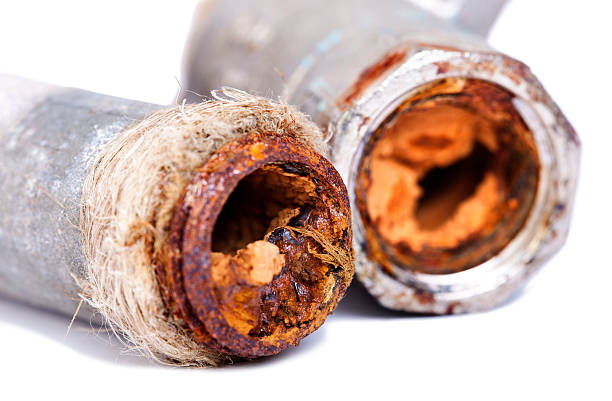RYZNAR INDEX (RSI)

By knowing your Ryzner Index, you can avoid this result. Safe Home offers a couple kits that provide drinking water testing for ryznar index in city or well water supplies.
Parameter Type: Drinking Water Testing for Volatiles
Parameter Name: Ryznar Index (RSI)
What it is and Where it Comes From:
In 1944, John Ryznar proposed substantial modification of the Langelier index. He had seen that it was, surprisingly, possible for low hardness and high hardness waters to both have the same LSI. Ryznar named his creation the Stability Index (RSI = 2pHs – pH) to differentiate it from Langelier’s Saturation Index and he justified this re-statement with experimental data. The Ryznar index is also known as the Ryznar stability index. The Ryznar Stability Index is a calculation and has no units of measurement. Note: An RI of < 5.5 is considered heavy scale forming. An Ryznar Index of 5.5 à 6.2 is considered scale forming. An Ryznar Index of 6.2 à 6.8 is ideal. An Ryznar Index of 6.8 à 8.5 is considered aggressive water. An Ryznar Index of >8.5 is considered very aggressive water. Drinking water testing gives you several benefits like peace of mind, identifying contaminants in your water, and insight into health concerns. Safe Home offers Laboratory drinking water testing kits for ryznar index, allowing you to collect your water sample and ship it directly to our EPA-Certified Laboratory. This platform of drinking water testing for ryznar index will give you an accurate level based on the lowest level of a parameter our instruments can detect (Method Detection Level). Safe Home drinking water testing for physical properties can be used for city and well water supplies. Drinking water testing should be done any time you notice a significant change in your water quality.
Health Effects:
Potential health effects of drinking water quality changes caused by acid precipitation are presented. Several different types of water supply are discussed and their roles in modifying acid rain impacts on drinking water are explained. Sources of metals contamination in surface water supplies are enumerated. The authors present some results from their research into acid rain impacts on roof-catchment cisterns, small surface water supplies, and lead mobilization in acid soils. A good correlation was obtained between cistern water corrosivity as measured by the Ryznar Index (RI) values and standing tap water copper concentrations. However, lead concentrations in tap water did not correlate well with cistern water RI. A modified linear regression model that accounted for Ryznar Index change during storage in vinyl-lined cisterns was used to predict the Ryznar Index value at a copper concentration of 1000 micrograms/L. The predicted RI was greater than the RI of precipitation with a pH of 5.3, indicating that anthropogenically acidified precipitation may result in cistern tap water copper concentrations more than the 1000 micrograms/L suggested drinking water limit. Good correlations between tap water Ryznar Index and tap water copper and lead concentrations were not obtained for the small surface water supply. Aluminum concentrations in reservoir water were like those in stream source water. Limited data were also presented that indicated lead was present in acid forest soil leachate and streams draining such soils in relatively small concentrations. Drinking water testing is a great way to monitor contaminates in your water system.
Solutions to Contaminant Levels:
After drinking water testing, what can I do to solve my water issue? There are various methods that can be used to solve corrosive water problems. Some of these methods include replacement of the household plumbing system, water treatment systems that make the water non-corrosive, or reducing/removing the by-products of corrosive water. Since corrosive water dissolves the components of the plumbing system, one way to deal with it is to replace the entire household plumbing system with materials that are resistant to corrosion. National Sanitation Foundation (NSF) approved plastic pipe is made for drinking water and is resistant to corrosion. This material can be used to replace metal plumbing throughout the home. This is usually the best method to deal with corrosive water if pinhole leaks are developing. Another method to deal with corrosive water is to install a treatment system that will make the drinking water non-corrosive. Units such as acid neutralizing filters or chemical feed systems can be used to reduce corrosiveness of the water by increasing the alkalinity. Corrosive water can be problematic throughout the entire household plumbing system, so these treatment units are usually installed at point of entry (POE) to treat all the water that enters the home. Another treatment method involves use of a chemical feed system that slowly forms a protective coating in the pipe system. The coating keeps water away from the metals and in this way controls corrosion. One final method to deal with corrosive water is to reduce or eliminate the metals being leached from the plumbing system. Who do I need to contact to find out more information about water quality in my area? Every community water supplier must provide an annual report to its customers, known as a Consumer Confidence Report (CCR). The report provides information on your local drinking water quality, including the water’s source, contaminants found in the water, and how consumers can get involved in protecting drinking water. How often does the local public water system preform drinking water testing? Frequency of drinking water testing depends on the number of people served, the type of water source, and types of contaminants. Certain contaminants are tested more frequently than others, as established by the Safe Drinking Water Act. You can find out about levels of regulated contaminants in your treated water for the previous calendar year in your annual Consumer Confidence Report (CCR).


